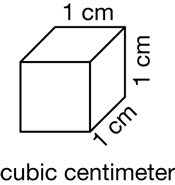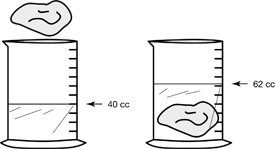Students use the TIMS Laboratory Method to collect, organize, graph, and analyze data of the volume of different numbers of marbles. They look for patterns in the data that will help them estimate the volume of a given number of marbles. Lesson 2 Fill It First Game provides the context for the lab.
Content in this Lesson
- Measuring volume by displacement [E6].
- Estimating the volume of small objects [E7].
- Representing the variables and procedures of an investigation in a drawing [E9].
- Making and interpreting point graphs [E10].
- Drawing and interpreting best-fit lines [E10].
- Making predictions and generalizations using data tables and graphs [E12].
- Identifying patterns for increasing functions [E1].
- Representing patterns and functions using words, tables, and graphs [E2].
- Solving problems involving volume [E4].
- Checking the reasonableness of a solution [MPE3].
- Communicating the solution to a problem [MPE5].
- Using labels to show what numbers mean [MPE6].
- Connecting mathematics and science: measuring volume.
Daily Practice and Problems E–J
Assessment in this Lesson
| Assessment | Expectation Assessed | Math Practices Expectation Assessed |
|---|---|---|
|
Volume vs. Number |
|
|
|
Volume vs. Number |
|
|
|
Volume vs. Number |
|
|
















